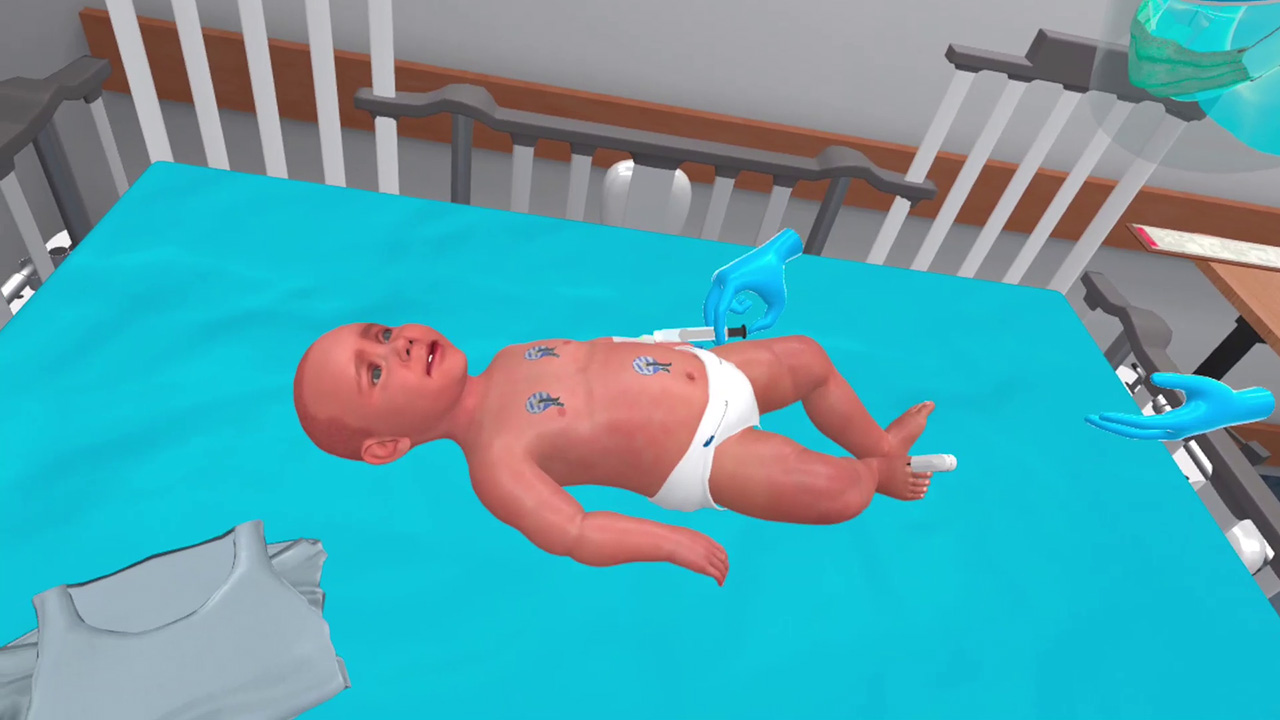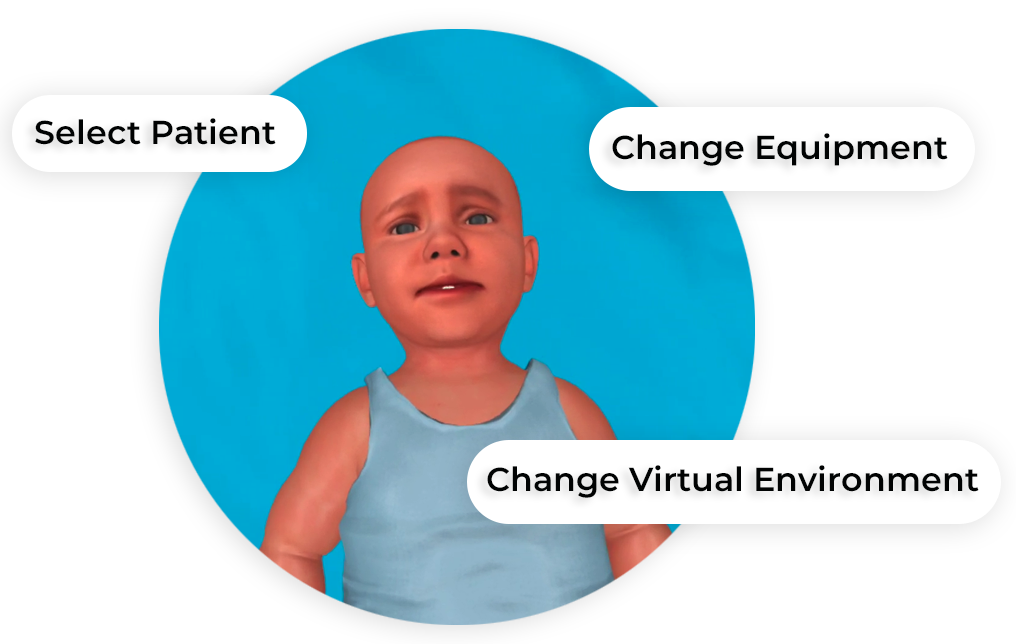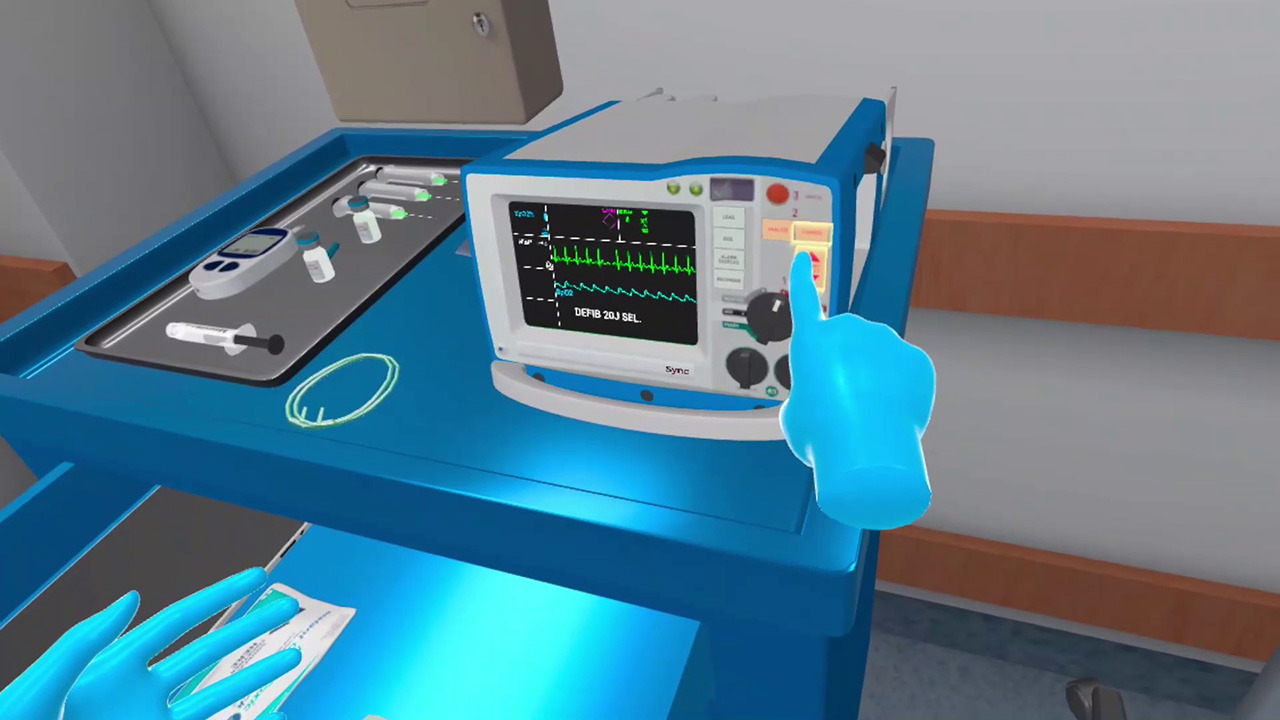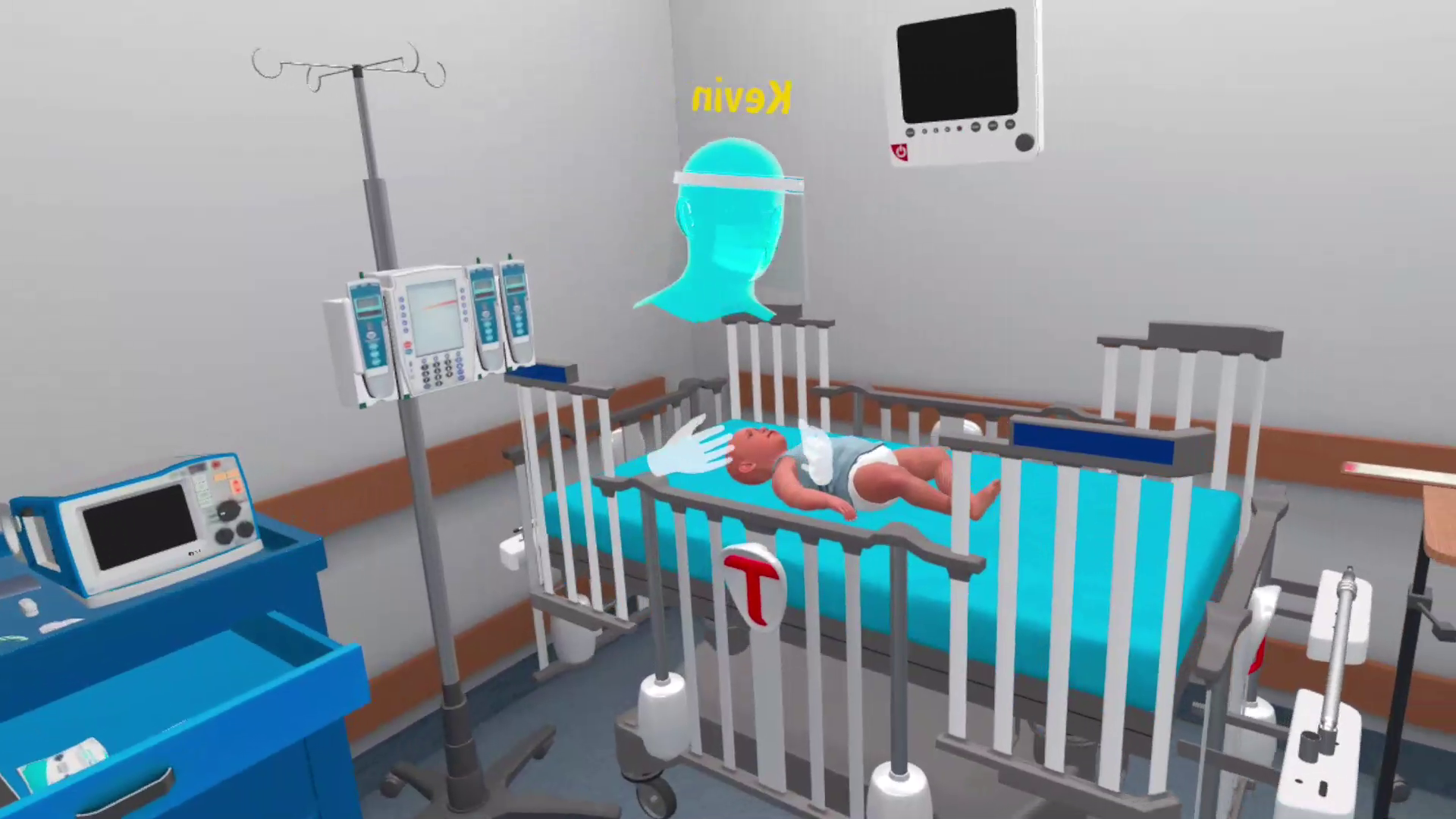Pediatric SVT
Jerry is a 12-month-old infant and has been brought into the Emergency Department by his parents. He has been fussy, crying all night and has not been feeding well. He has also vomited once. Jerry is found to have a significantly elevated heart rate.
This multiplayer, open-scenario VR simulation is designed to help healthcare practitioners respond to and manage a case of unstable Supraventricular Tachycardia (SVT) in an infant. The post-session debriefing serves as a self-analysis helping learners identify areas for improvement and avoid errors in the real world.
- Recognize and manage both stable and unstable SVT via PALS guidelines
- Rapidly estimate pediatric weight
- Effectively lead a team through PALS algorithms and the resuscitation of an infant
- Demonstrate high quality closed-loop communication during resuscitation
- Anticipate deterioration in a pediatric patient with compensated shock

- Marx, J. A., Hockberger, R. S., Walls, R. M., & Adams, J. (2013). Rosen’s emergency medicine: Concepts and clinical practice. St. Louis: Mosby.
- PALS Guidelines 2015
Customize Your Program
Get rid of the editor. Adopt in-VR customization.
MedVR Education is bringing to you in-VR customization that will enable you to put together your own simulations by making selections from a wide range of feature choices.
- Select patient from a diverse background
- Choose preferred virtual environment
- Configure patient vitals
- Define simulation duration
- Create patient history and train with AI-Humans
- Customize session-end debriefing
- …..many more to come

 Multi-player
Multi-player
Sessions Physics-based Interaction
Physics-based Interaction
Core Skills Training

Infant SVT
In this open scenario simulation, learners are expected to recognize the patient to be in a stable SVT rhythm with no response to either vagal maneuvers or adenosine. As the patient progresses towards an unstable SVT the learner will be expected to administer appropriate sedative medication and provide synchronized cardioversion to improve the condition of the patient. The scenario is set in a realistic virtual environment and equipped with all necessary tools to provide learners with first-hand experience of a pediatric resuscitation.
Debriefing
End-of-task debriefing to assess one’s performance, evaluate actions, and get the most out of the session. The debriefing includes crucial points related to the scenario.
- Thorough patient assessment
- Completion of necessary steps
- Correct medication administration to patient
- Sequential completion of task
- Execution of time-sensitive tasks







